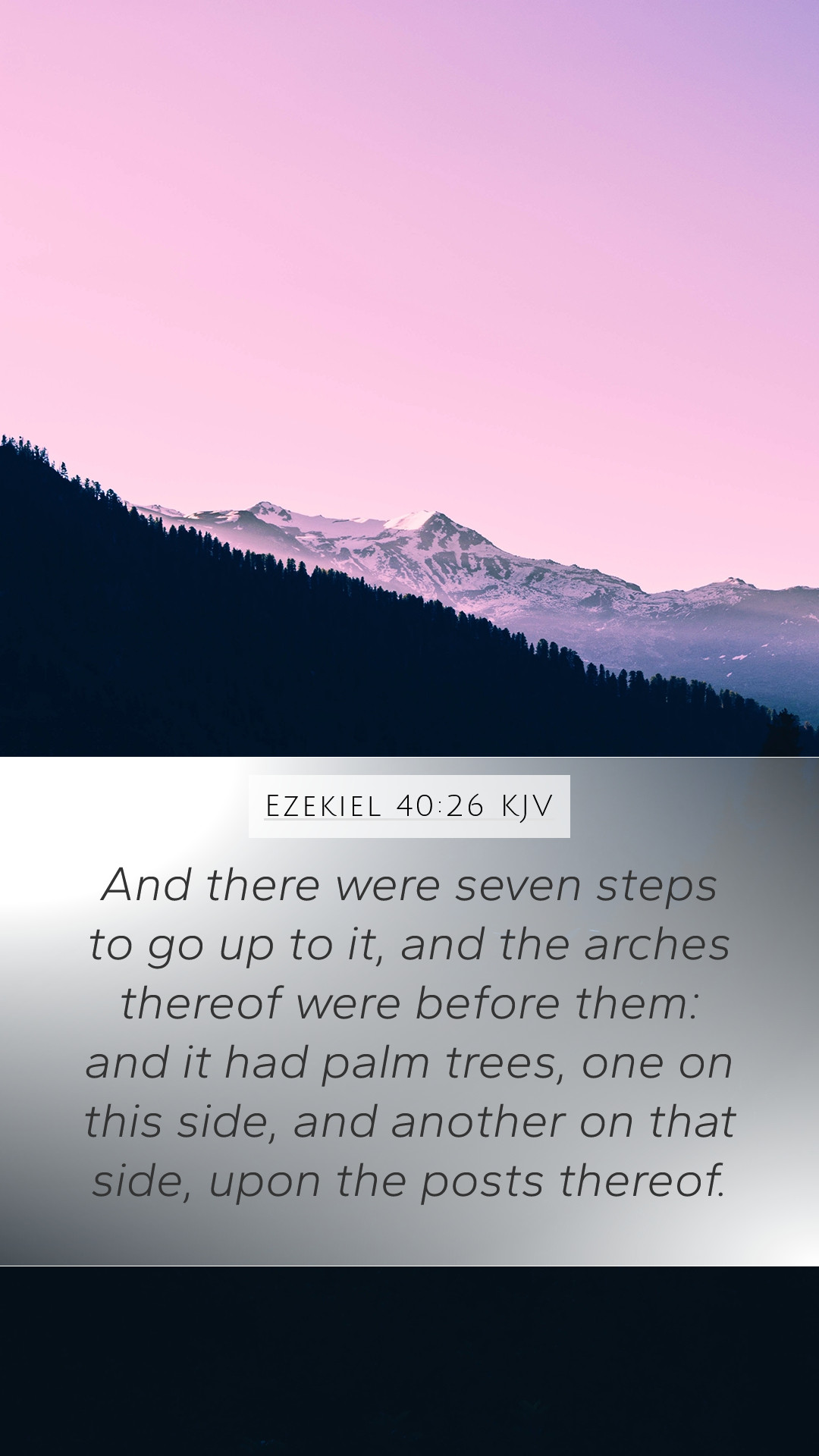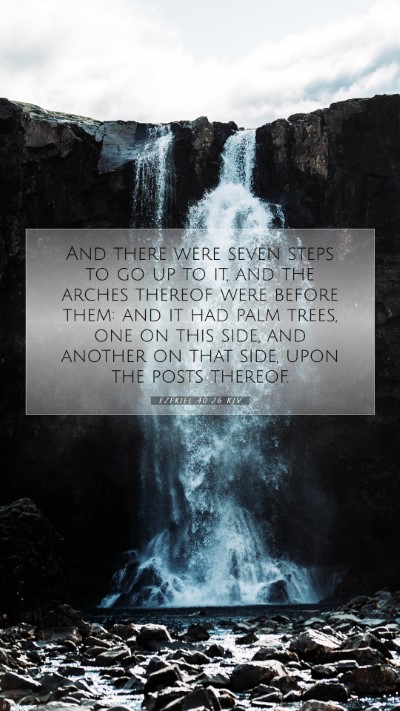Bible Verse Meaning: Ezekiel 40:26
Ezekiel 40:26 states, "And the little chambers thereof were three on this side, and three on that side: they were three cubits high: and the posts thereof were a little thicker than the posts." (KJV) This verse is part of a larger vision that Ezekiel received concerning the future temple, and it presents architectural details that hold both spiritual and symbolic significance.
Understanding the Verse
This verse highlights the intricate design of the temple and offers valuable insights into its structure. Commentators like Matthew Henry emphasize the importance of the temple as a place where God would dwell among His people. The detailed descriptions serve not only to convey the physical layout but also to reflect divine order and holiness.
The Architectural Features
- The chambers: The mention of little chambers on both sides indicates a well-organized space designed for various functional purposes, such as storage or accommodations for priests (as noted by Albert Barnes).
- Dimensions: The three cubits high aspect underscores the temple’s elevation and grandeur, symbolizing the lofty nature of God's dwelling place (as explained by Adam Clarke).
- Posts: The thicker posts symbolize strength and stability, suggesting that God's presence in the temple is a secure refuge for His people.
Spiritual Significance
The detailed description in Ezekiel 40:26 conveys more than just architectural facets. It represents the covenant relationship between God and His people. Matthew Henry notes that such a structure reflects God's desire to be close to humanity, offering a place of worship and encounter. This engagement is crucial for understanding Bible verse meanings in the context of relationship and reverence.
Bible Study Insights
In conducting a scriptural analysis or Bible study, one might consider:
- How the temple's design illustrates the holiness of God.
- The significance of God's presence in worship practices.
- The historical context in which Ezekiel delivered this vision to the exiles, serving as a message of hope and restoration.
Related Bible Cross References
- Exodus 25:8-9: God's command to build a sanctuary signifies His desire to dwell among His people.
- 1 Kings 6:10: Details concerning Solomon's temple, echoing the importance of divine dwelling.
- Revelation 21:3: The ultimate fulfillment of God's dwelling among humanity in the new heaven and new earth.
Conclusion
Ezekiel 40:26 presents a profound commentary on the relationship between God and humanity through the intricacies of temple architecture. As we explore this text, it becomes clear that understanding Scripture requires a holistic approach, engaging both the physical descriptions and their deeper spiritual ramifications. For those involved in Bible study groups or online Bible study, this verse serves as a pivotal element in understanding the overarching narrative of God's covenant and presence in our lives.
In conclusion, the verses provide insights into the future hope for God's people and the significance of worship. Each aspect from Ezekiel's vision invites readers not only to appreciate the physicality of the temple but to also internalize the spiritual truths that bind humanity to its Creator.


